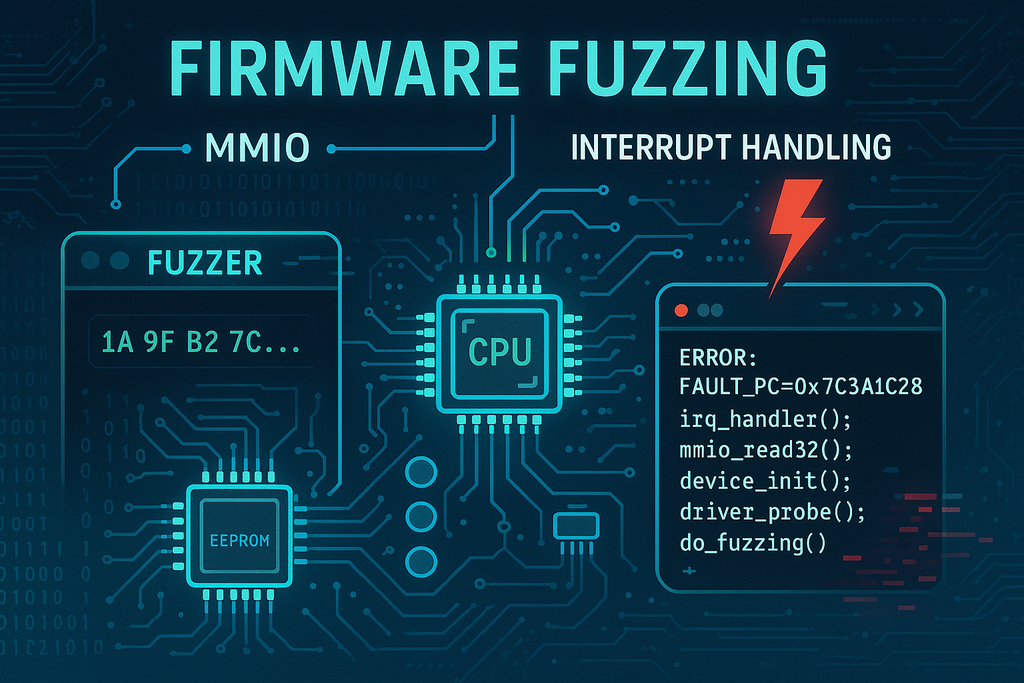
At Metalware we know that your security stack is already loaded with static analysis tools—yet if you’re not fuzzing your firmware, you’re leaving critical vulnerabilities undiscovered. Recent research comparing dynamic fuzzing against static analysis tools like Coverity and Checkmarx confirms that while static methods are good at flagging potential issues, they miss nearly all the real-world flaws that can lead to exploitation.
The Static Analysis Gap
Static code analysis has long been a cornerstone of development security. Tools like Coverity and Checkmarx scan your source code to identify risky patterns and potential vulnerabilities. In many environments, these tools throw up thousands of alerts, and your teams spend hours triaging results that may not even be relevant. Worse still, when it comes to identifying actual exploitable issues, these tools fall short. According to a study underpinning our approach at Metalware, out of 45 real failure cases uncovered by fuzzing, Coverity directly identified only 4% of the flaws while Checkmarx managed just 8%. The remaining findings were either flagged as “possible” (23% for Coverity and 6% for Checkmarx), “unlikely” (4% and 2% respectively) or completely missed—73% and 84% of the time.
These numbers paint a stark picture: static analysis is invaluable for its broad coverage, but when it comes to pinpointing the critical issues that can be actively exploited, it simply isn’t enough.
Why Fuzzing Makes the Difference
Fuzzing operates on a fundamentally different principle. Instead of simply scanning code for patterns, fuzzing dynamically interacts with your firmware. By programmatically injecting semi-random inputs and monitoring system behavior, fuzzers force the firmware into states that static analysis never sees. This dynamic approach ensures that the failure cases found are real, reproducible, and—most importantly—actionable.
Unlike static analysis, fuzzing produces no false positives. When a fuzzing engine detects an issue, you have a concrete test case that directly demonstrates a flaw in your firmware’s behavior. This is why dynamic fuzzing is particularly potent for firmware environments, where the interplay between hardware and software can obscure issues that only surface under real-world conditions.
The Data Speaks for Itself
Let’s break down the numbers:
- Coverity: Only 4% of fuzzing-identified flaws were directly detected. Another 23% were flagged as “possible” and 4% as “unlikely” findings—leaving a staggering 73% of the real failure cases with no direct static analysis correlation.
- Checkmarx: The tool performed slightly better with 8% of fuzzing findings being direct, 6% marked as “possible,” and 2% as “unlikely.” Even then, 84% of the genuine issues went unnoticed.
These stats are not just numbers on a page—they’re a wake-up call. In environments where security is paramount, relying solely on static analysis means you’re potentially exposed to critical vulnerabilities that remain hidden until it’s too late.
Bridging the Security Divide
At Metalware, we’ve built our firmware fuzzing solution to seamlessly complement your existing static analysis tools. Our approach doesn’t replace static methods; rather, it plugs the significant gaps that static analysis leaves behind. By leveraging advanced fuzzing techniques, our product exposes deep-seated issues—like runtime memory overflows and assertion failures—that static analysis often overlooks.
For firmware developers and security engineers, integrating a dynamic fuzzing tool means gaining the kind of actionable intelligence that static analysis alone can’t provide. It’s not about adding another checkbox to your security process; it’s about evolving your approach to address the complexity of modern firmware vulnerabilities head-on.
Final Thoughts
Static analysis will always have a role in your development process. However, if you’re serious about securing your firmware, the evidence is clear: fuzzing is the missing piece of the puzzle. With only 4% (Coverity) and 8% (Checkmarx) of fuzzing-identified failures directly caught by static analysis, there’s a critical need for a dynamic approach to vulnerability discovery.
By adopting Metalware’s firmware fuzzing solution, you’re not only reinforcing your defenses—you’re ensuring that your security posture is as robust as possible in the face of evolving threats.
Embrace the power of fuzzing, and don’t let your security strategy be compromised by the limitations of static analysis alone.




